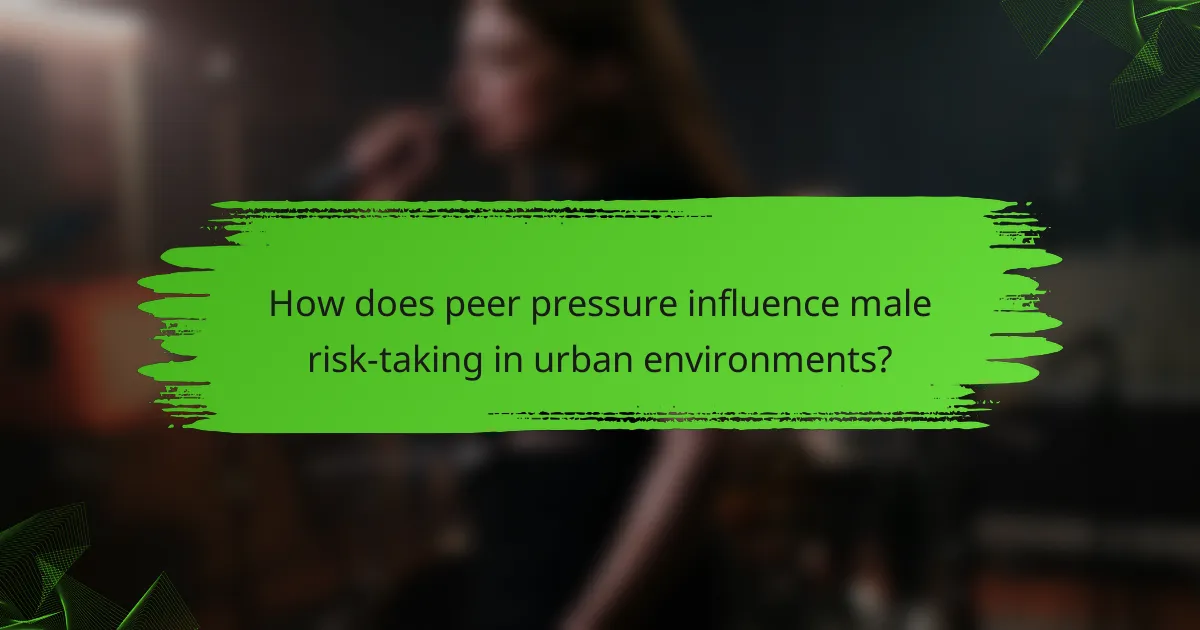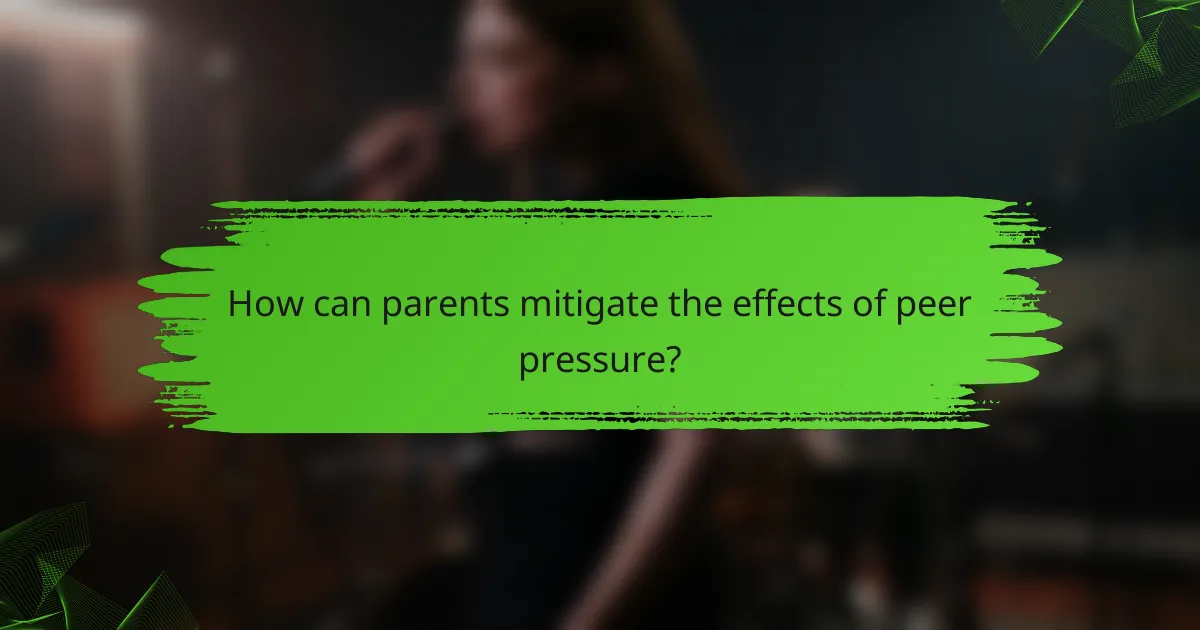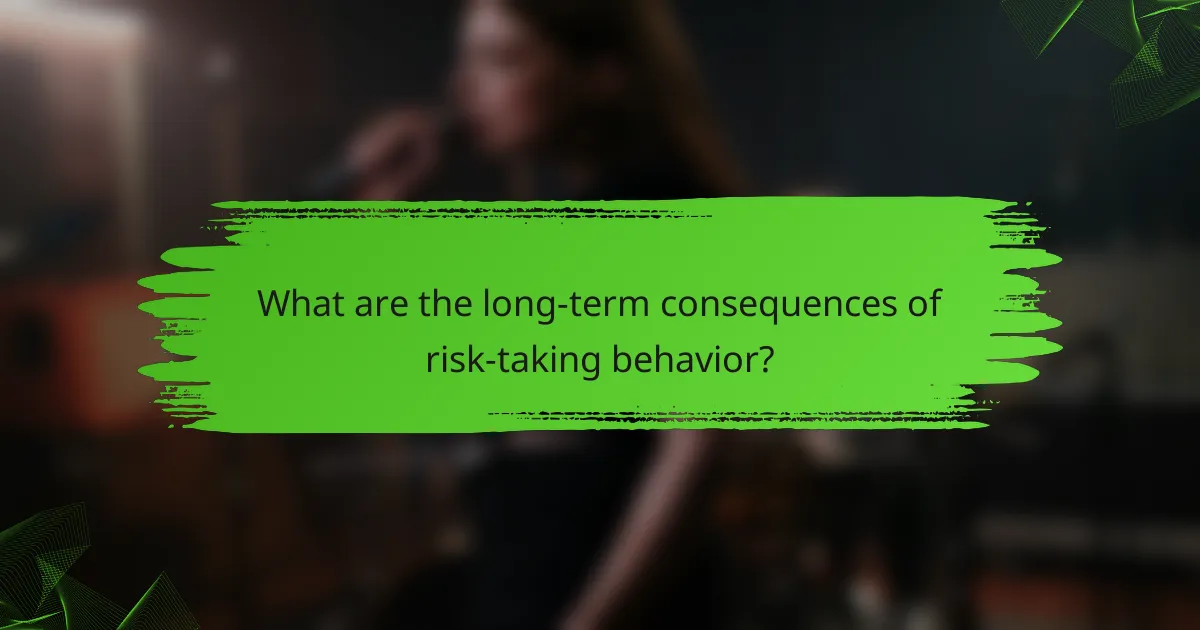Peer pressure plays a crucial role in shaping male risk-taking behaviors, particularly in urban environments where such actions are often normalized. Young men may feel compelled to engage in risky activities, like reckless driving or substance use, to gain acceptance from their peers. Additionally, the influence of social media amplifies this effect by promoting trends that encourage daring behaviors for the sake of visibility and validation.

How does peer pressure influence male risk-taking in urban environments?
Peer pressure significantly increases male risk-taking in urban settings by creating a social environment where risky behaviors are often normalized or encouraged. Young men may engage in activities such as reckless driving, substance use, or extreme sports to gain acceptance or approval from their peers.
Increased likelihood of reckless behavior
In urban environments, the presence of peers can lead to a higher propensity for reckless behavior among males. Activities like street racing, vandalism, or substance abuse are more likely to occur when individuals are surrounded by friends who endorse such actions. This group dynamic can diminish personal inhibitions and amplify the desire to impress others.
For instance, a young man may feel compelled to participate in dangerous stunts or illegal activities simply to fit in with a group, even if he personally recognizes the risks involved. This shift in behavior can be attributed to the desire for social validation and the fear of being ostracized.
Impact on decision-making processes
Peer pressure can significantly alter decision-making processes, particularly among males in urban areas. When faced with choices, individuals may prioritize group opinions over their own values or judgments, leading to impulsive decisions that prioritize immediate social acceptance over long-term consequences.
For example, a young man might choose to consume alcohol or drugs at a party, influenced by friends who are engaging in similar behavior, despite knowing the potential health risks. This tendency to conform can result in a cycle of risk-taking that becomes increasingly difficult to break.

What are the psychological effects of peer pressure on males?
Peer pressure significantly impacts males by influencing their behavior, emotions, and decision-making processes. It can lead to increased risk-taking, anxiety, and changes in self-identity as they strive for acceptance within their social groups.
Heightened anxiety and stress levels
Peer pressure can cause males to experience heightened anxiety and stress, particularly when they feel compelled to conform to group expectations. This pressure often manifests in situations where they must choose between their personal values and the desires of their peers.
For instance, a male may feel anxious about participating in risky activities, such as substance use or dangerous stunts, to gain approval from friends. Over time, this constant stress can lead to long-term mental health issues, including anxiety disorders.
Altered self-perception and identity
Peer pressure can significantly alter how males perceive themselves and their identities. When they prioritize group acceptance over their own beliefs, they may struggle with self-esteem and confidence, leading to an identity crisis.
For example, a male who typically values academic achievement may downplay his studies to fit in with a group that prioritizes sports or partying. This shift can create internal conflict and confusion about their true self, ultimately affecting their personal development.

What role do social media platforms play in male risk-taking?
Social media platforms significantly influence male risk-taking behaviors by promoting trends and challenges that encourage daring actions. These platforms create environments where peer validation and visibility can drive individuals to engage in risky activities to gain attention and approval.
Promotion of risky challenges on TikTok
TikTok is known for its viral challenges that often involve risky stunts, from dangerous physical feats to extreme dares. The platform’s algorithm favors engaging content, which can lead to an increase in participation in these challenges, sometimes without considering the potential consequences.
For example, challenges that involve jumping from heights or performing stunts without safety measures can be appealing to young males seeking thrills. It’s crucial to recognize that while these challenges may seem harmless, they can result in serious injuries or legal repercussions.
Influence of Instagram on lifestyle choices
Instagram shapes lifestyle choices through curated images and influencer endorsements that often glamorize risk-taking behaviors. Males may feel pressured to emulate the adventurous lifestyles showcased by influencers, leading to decisions that prioritize thrill over safety.
For instance, posts featuring extreme sports or reckless partying can create a perception that such behaviors are normal or desirable. Young men should critically assess the authenticity of these portrayals and consider the potential risks involved before engaging in similar activities.

How can parents mitigate the effects of peer pressure?
Parents can mitigate the effects of peer pressure by fostering a supportive environment that encourages open dialogue and critical thinking. By actively engaging with their children, parents can help them navigate social influences and make informed decisions.
Encouraging open communication
Open communication allows children to express their thoughts and feelings without fear of judgment. Parents should create a safe space where discussions about peer pressure and its implications are welcomed. Regular family meetings or casual conversations during meals can facilitate this exchange.
Listening actively to children’s experiences with peers can help parents understand the dynamics at play. This understanding enables parents to provide tailored advice and support, reinforcing their child’s confidence in resisting negative influences.
Teaching critical thinking skills
Teaching critical thinking equips children with the ability to analyze situations and make sound decisions. Parents can encourage their children to question the motivations behind peer behaviors and consider the potential consequences of their actions.
Practical exercises, such as role-playing scenarios where children face peer pressure, can enhance their decision-making skills. Parents might also introduce discussions about real-life examples of risk-taking and its outcomes, helping children to evaluate choices critically.

What strategies can schools implement to address peer pressure?
Schools can implement various strategies to effectively address peer pressure among students, particularly focusing on fostering a supportive environment. These strategies include peer mentoring programs and workshops on decision-making, which help students navigate social influences and make informed choices.
Peer mentoring programs
Peer mentoring programs pair students with older or more experienced peers who can provide guidance and support. These programs create a safe space for younger students to discuss their experiences with peer pressure and seek advice on handling difficult situations. By fostering relationships based on trust, students are more likely to share their challenges and learn from their mentors’ experiences.
For effective peer mentoring, schools should consider training mentors on communication skills and conflict resolution. Regular check-ins and structured activities can enhance the mentoring experience, ensuring that both mentors and mentees benefit from the program.
Workshops on decision-making
Workshops on decision-making equip students with the skills to evaluate situations critically and make informed choices. These workshops can cover topics such as identifying peer pressure, understanding its effects, and developing strategies to resist negative influences. Engaging activities, role-playing scenarios, and group discussions can make these workshops interactive and impactful.
To maximize effectiveness, schools should tailor workshops to address age-specific challenges and include real-life examples relevant to students’ experiences. Providing resources, such as decision-making frameworks or checklists, can help students apply what they learn in everyday situations.

What are the long-term consequences of risk-taking behavior?
Long-term consequences of risk-taking behavior can significantly impact an individual’s health, legal standing, and social relationships. Engaging in risky activities often leads to negative outcomes that can persist for years, affecting various aspects of life.
Increased likelihood of substance abuse
Risk-taking behavior is closely linked to an increased likelihood of substance abuse. Males who engage in high-risk activities may use drugs or alcohol as a coping mechanism or to enhance their experiences. This can lead to a cycle of dependency, where the individual feels compelled to take risks to maintain their substance use.
Over time, this behavior can escalate, resulting in addiction, health issues, and strained relationships. For instance, young men who frequently party or engage in extreme sports may be more prone to using stimulants or alcohol, which can further impair their judgment and increase risk-taking.
Potential for legal issues
Engaging in risk-taking behavior often raises the potential for legal issues. Activities such as reckless driving, underage drinking, or drug possession can lead to arrests, fines, or other legal consequences. These incidents can create a criminal record that affects future employment and educational opportunities.
Moreover, the financial burden of legal fees and potential penalties can be substantial. Young males may not fully grasp the long-term implications of their actions, leading to choices that could have lasting repercussions on their lives and careers.

How does cultural context affect male risk-taking behavior?
Cultural context significantly influences male risk-taking behavior by shaping perceptions of risk and acceptable actions. Factors such as societal norms, values, and expectations can either encourage or discourage risk-taking among men in different cultures.
Variations in risk perception across cultures
Risk perception varies widely across cultures, often influenced by historical, social, and economic factors. For example, in collectivist societies, the potential impact of risk on the community may lead to more cautious behavior, while individualistic cultures may promote personal achievement through risk-taking.
Additionally, cultural narratives and media representations can shape how risks are viewed. In some cultures, extreme sports may be celebrated, while in others, they might be seen as reckless and irresponsible.
Influence of cultural norms on behavior
Cultural norms play a crucial role in determining acceptable risk-taking behavior among men. Norms surrounding masculinity often encourage behaviors perceived as bold or adventurous, which can lead to increased risk-taking in certain contexts.
For instance, in cultures where bravery and assertiveness are valued, men may engage in risky activities to conform to these ideals. Conversely, in cultures that prioritize safety and caution, men may be less likely to take risks, reflecting the influence of societal expectations on individual behavior.

What are the emerging trends in peer pressure among males?
Emerging trends in peer pressure among males indicate a shift towards more complex social dynamics, influenced by digital communication and changing societal norms. Young men are increasingly facing pressure not only in traditional settings but also online, where social media amplifies expectations and behaviors.
Increased Influence of Social Media
Social media platforms have become significant arenas for peer pressure, where males often feel compelled to conform to curated lifestyles and behaviors showcased by their peers. This digital environment can lead to heightened risk-taking as young men seek validation through likes and shares.
For instance, challenges and trends that promote risky behaviors, such as extreme sports or dangerous stunts, can quickly gain traction online, encouraging participation among impressionable youth. The desire to fit in or gain popularity can overshadow personal safety considerations.
Shifts in Masculine Norms
Modern definitions of masculinity are evolving, with a growing acceptance of vulnerability and emotional expression. However, this shift can create conflicting pressures, as some males may feel the need to prove their toughness or risk-taking abilities to align with traditional masculine ideals.
Young men might engage in risky activities, such as substance use or reckless driving, to assert their masculinity in front of peers. Balancing these changing norms with the desire for acceptance can lead to complex decision-making scenarios.
Peer Group Dynamics
The composition of peer groups significantly influences risk-taking behaviors among males. Close-knit groups may foster a sense of loyalty that encourages members to partake in risky activities together, reinforcing a cycle of peer pressure.
For example, a male might feel pressured to participate in dangerous activities like street racing or substance experimentation simply to maintain his status within the group. Understanding the dynamics of these relationships is crucial for addressing the impact of peer pressure on decision-making.



